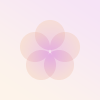Development of an app for digital measurement of ventilation ducts
The app, which we developed on behalf of Markora, supports air conditioning technicians throughout Germany in measuring and installing ventilation systems.
Key Features
The software we developed offers the following key features:
Ventilation duct parts can be assembled and visualized via 3D configurator.
The majority of air-conditioning and ventilation engineers worldwide still use pencil and paper to calculate the dimensions of components. Back in the office, the measurements are then manually typed into the computer and a corresponding order is prepared.
With the solution we developed on behalf of the Markora company, technicians on site can enter all measurements directly into the app. All components are visualized in 3D based on the entered dimensions.
The finished measurement can be called up in a fraction of a second for colleagues in the office in the web version. Here it is possible to check and automatically generate a PDF order, as well as the industry-standard XML document.

Automatic measurement via augmented reality
For a future further development of the software, among other things, an automatic measurement function with the help of augmented reality is planned.
With the help of the lidar laser scanner built into newer iPhones, distances can be precisely recorded and suitable duct sections automatically suggested.
Screenshots from the app
The mobile app is primarily designed for the fitters on the construction site and offers a functional design as well as clear buttons for easy operation:
Questions about the project?
If you have any further questions about our services or projects, please do not hesitate to contact us.
Die Anforderungen seitens des Kunden wurden in Form eines circa. 30-Seitigen Lastenheftes mit zusätzlichen Beispielen der Export-Formate geliefert.
In mehreren gemeinsamen Workshops mit dem Kunden wurden Rückfragen besprochen und die Anforderungen anschließend intern in unseren Projektmanagement-Tools wie Jira und Confluence abgebildet.
Für die Konzeption und Entwicklung der Mobile- und Webanwendung waren zwei Entwickler circa drei Monate Vollzeit dem Projekt zugewiesen.
Die Gesamtkosten der Konzeption und Entwicklung beliefen sich auf einen mittleren fünfstelligen Betrag.
Die genannten Zahlen dienen als Vergleichswert. Grundsätzlich lassen sich Projekte auf vielerlei Art und Weise umsetzen.
Angebotstellung
April 2021
Erste Betaversion
Mai 2021
Version 1.0
August 2021
Weiterentwicklung
Fortlaufend
Technology Stack
The developed SaaS version consists mainly of a mobile app based on Google Flutter, as well as a web backend based on the PHP-based Symfony framework. The web backend also acts as an API server and database for the application. A dockerized environment gives the application the scalability it needs.






Interest aroused?
We look forward to helping you develop your apps.






